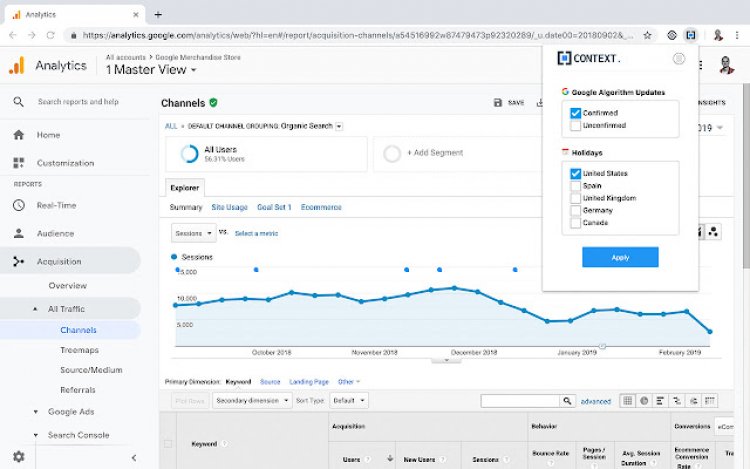Steps to improve your site on search engines.. In detail
Improving your SEO site is a must to achieve the best possible ranking compared to competitors in different search results pages for search engine users (your potential customers).
Search engine pages provide the largest share of site visits free of charge, so competition for top positions in search results increases daily to maximize the benefit of having a website for any company or business.
The Search Engine Optimization Process (SEO) is a continuous process that does not have to stop as it cannot be guaranteed to be in the top positions on search result pages. Search terms are common among your target customers.
Search engines provide equal opportunity for all sites to compete for the best ranking in search results provided you design and develop your site according to the requirements of search engines and develop useful and distinctive content continuously to provide the best possible browsing experience for search engine users.
What are search engines?
Search engines are electronic platforms that provide answers to search terms used by search engine visitors such as Google or Bing by displaying pages of sites related to search engine users’ searches that are stored within search engine databases immediately after being created by website owners and blogs.
Site pages are indexed and search results are arranged based on several factors. The most important of these are the compatibility of the sites with the search engine requirements of an attractive design and an interconnected structure of the site that facilitates the search spiders process (Search engine spiders) as well as useful and distinctive content that is closely related to the search term used.
Search engines seek to provide the best possible browsing experience for engine users and answer all their questions by providing search results that take into account the needs of visitors and meet their expectations through pages of sites whose greatest purpose is to market through distinctive content to gain the confidence of visitors to the site (your potential customers) rather than using annoying ads that reduce visitors’ satisfaction with the content of your site.
How to configure sites for SEO search engines:
The search engine optimization process encompasses several important aspects starting with the beginning of the design and development of the site in a way that facilitates the task of search engines to browse and archive different pages of your site without any problems to be available for search results for topics related to page content.
Developing site content to suit search engine requirements and providing useful content that answers common search questions in your field is the second and most important step in the journey of preparing your site for search engines.
The next step is to provide the best possible browsing experience for visitors from improving the speed of uploading pages and facilitating access to all pages as soon as possible to take advantage of the limited visitors time to browse as many pages as possible related to what they are looking for on your site to encourage visitors to visit your site in the future.
Search engines have increased confidence in your site while increasing the number of external links to your site in reliable sites with content related to the content of your site’s pages. Therefore, you must develop an effective strategy to increase the external links to your site in a professional way. Avoid any search engine penalties for how to build external links to the site.
The presence of technical problems on the site will reduce visitors’ satisfaction with the experience of browsing your site and lose a large part of the volume of visits by your different customers to competing sites that provide a better browsing experience without any technical problems that reduce the amount of use of the content of the site. This increases the importance of checking the site fully periodically to avoid any defects in the content of the sites or potential technical problems.
Performance analysis platforms such as Google Analytics provide another online marketing feature where the performance of your website and marketing and advertising campaigns related to the site’s content can be evaluated through detailed data related to site visits from your potential customers.
Performance analytics provide an opportunity to evaluate the process of optimizing your site for search engines through detailed statistics related to the size of site visits from search results pages compared to other site visit sources.
Search engines make adjustments to website page assessment algorithms periodically to provide the most appropriate search results for the search terms used. These modifications may negatively affect the ranking of your site in search results pages. This should be avoided by periodically following search engine modifications and developing the site to suit those modifications.
SEO Search Engine Site Optimization Steps:
The following steps include the most important details of the site to optimize the site for SEO search engines and achieve the best possible ranking in the search results pages related to the site’s content:
1- Design and develop your site in a way that facilitates the task of search engines:
Design and development of your website should take into account the facilitation of the search engine process to examine the content of the different pages of the site and catalog these pages in the search engine databases to gain priority in the ranking of search results for all matters related to the content of the site, including the following steps:
–Providing internal links to different pages of the site facilitates the search engines to access and catalog the content of the page.
-Using addresses for internal links (anchor text) that relate to the content of the page leading to it to provide search engine crawlers with additional information on the content of the page to better catalogue the page in the search engine databases.
-Reduce the use of redundant JavaScript language in programming as it makes it difficult for search engines to understand page content.
-Do not accidentally block any important content pages using robots.txt files from search engine bots.
-Reduce the number of links in the pages of the site that have nothing to do with the content of the page where search engines scan and archive a specific number of internal links on each page.
-Website design to comply with mobile phones as most searches and browsing sites are done through mobile phones and search engines consider the site compatibility with mobile phones as an indicator of site quality.
-A sitemap map helps search engines access website pages faster and rated better to be available for all search results related to page content.
-Use robots.txt file to identify specific pages that are excluded from the search engine inspection and archiving process that may contain internal data unrelated to the content of the site or pages whose content is modified and developed.
-Use Canonical’s profile with links to pages with duplicate content to determine which original page to examine and archive their content via search engines.
-Write the main link to the page (URL) easily for search engines and search engine users to provide a preliminary idea of the page’s content.
2. Develop site content to suit search engines and visitors’ needs:
Website page content is the most important marketing tool in the online marketing process through websites where unique and useful content is the way to earn the trust of search engine users by providing answers to common questions regarding the field of your site to become your preferred potential online customer destination.
Developing the content of website pages and blogs to meet the requirements of search engines and the aspirations of visitors to the site requires taking into account several important matters related to all details of the content of the sites’ pages, including the following points:
-Identify targeted keywords related to the domain and content of the site used by your potential customers in daily searches
-Use of Targeted Search Words in Page Titles, Page Descriptions, Page Headings and Page Content
-Using synonyms for targeted search words in page content to help search engines better understand the content of the site and link it to the search results most suitable for content.
-Do not overuse targeted keywords in page content.
-Provide a description of any image or video used in page content to help search engines understand visual content and include your site in search results related to this content.
-Create a link address for the page (URL) and a brief description of the page (meta description) related to the page title to encourage visitors to enter your site when it appears in the search results.
-Use many forms of visual content such as images, infographic and video to diversify page content and how to view information.
-Add internal links to other pages on your site or topics in the website blog or external links to other sites that include content related to page content to increase the expected usefulness of those visiting your site.
-Create long content more than 1000 words for each topic that has a preference for search engines in terms of search page results as long as this content is not duplicate and fun encourages the reader to update it rather than refer to the search results page and choose another site that offers better content.
-Create new content periodically and configure the blog for search engines with content related to the field of your site to increase the opportunity to appear in search page results and increase the size of site visits as well as periodically modify page content and add new information that enriches existing content.
3. Provide the best possible browsing experience for visitors to the site:
Search engines evaluate website pages and arrange them in search results pages based on several important factors, the most important of which is the satisfaction of website visitors with the experience of browsing the site. The factors that provide the best browsing experience for visitors to the site and achieve the goal of visiting the site in the shortest possible time start from the speed of uploading pages of the site and include several other factors, the most important of which are:
-Improve the speed of loading site pages by compressing site files, reduce the number of redirects to another site page, reduce the number of photo and video files used without adding page content, reduce the pressure on the server using content distribution channels.
-Facilitate the process of browsing as many pages as possible as soon as possible by adding internal links to all the main pages of the site on the home page, dividing the content of the site into close categories and categories and adding each page to the appropriate classification, adding a search option.
-Advanced through visitor search terminology and showing results identical to search and results falling under the same category.
-Create a 404 page (Not Found) that shows visitors to the site in the absence of the desired page and add links to related pages or a back link to the homepage.
-Design the site to comply with the various devices used to browse the site and various sizes of screens to save time and effort for visitors to browse the site especially from mobile phones.
-Add feedback options and share the content of website pages, especially blog topics to increase interaction with visitors and get the impression of website visitors about the content of pages.
-Do not use annoying ads that appear immediately after uploading the page and reduce visitors’ satisfaction with your site and satisfy side ads that do not distract the focus of visitors to the site and reduce their chances of returning to your site in the future.
-Use simplified and easy-to-understand terms for all homepage addresses to encourage visitors to browse these pages for the purpose of being on your site.
4- Developing your website’s external linkage-building strategy (Backlinks Building)
The number of external links in the content of other sites directed to your site pages is a key factor and important in evaluating the site by search results.
Developing an external link building strategy for your site is the most difficult part of the process of setting up and optimizing the site for search engines. This depends heavily on third parties to communicate with to include external links to your site in the content of the pages of the sites related to your field of activity.
Steps to develop a strategy to increase the external links of your site vary based on the desired goals in the current period, including increasing the volume of visits to the site through a better ranking of search results and external links in reliable sites or increasing sales volume by appearing in front of the largest potential customer base.
The strategies for building external links to the site are multiple and you can use any of them based on the current status of your site regarding the number of existing external links to your site and the purpose to be achieved from this strategy:
-Create distinctive content relevant to the search terms common to your field that encourages visitors to the site to share with others and encourages owners of websites and blogs related to your field by referring to the content of your site through external links leading to your site.
-Search for popular and trusted websites and blogs in your field and search invalid links in website pages and blogs using tools such as Ahrefs Broken Link Checker and then communicate with website owners and blogs and offer to replace invalid links with pages for your site related to the content of those websites and blogs.
-Creating content about trusted websites and personalities in your field that benefits visitors by referring to their own content related to what your visitors are looking for. This will encourage them to mention your site in the content of pages related to your field content.
-Use your site’s visual content such as photos, infographic and video as a way to increase external links where most sites refer to your site when using it and communicate with the sites you use without adding links to your site to encourage them to refer to your site in order to avoid intellectual property rights complaints.
-Use Moz’s Link Explorer tool to compare the positioning of your site regarding external links with competitors, communicate with sites that provide them with external links and view your site content to be used in future blogs and pages related to the site’s content.
-Avoid exchanging links between websites to avoid search engine penalties that will reduce the ranking of your different site pages in search results while using the Disavow Backlinks tool to avoid any punishment from your site’s external links from unreliable websites.
-Add the option of sharing site content on various social media platforms to increase the size of site visits and increase the chances of obtaining external links from new website visitors with reliable websites and blogs related to your site content.
5- Periodically review and check the site to improve the performance of your site:
Having any problems with your site puts you at risk of losing a large part or all of the visits to your site from your potential customers. Therefore, you need to review and check the site periodically at least once a month to detect the defects in the site and improve performance to suit search engine requirements and visitor expectations.
The site review and inspection process includes several factors and steps using Google Search Console and Screaming Frog SEO Spider tool to verify all site details which will be detailed in the following points:
-Review the status of web pages regarding the process of page checks by search engines and the absence of any obstacles preventing search engines from scanning and indexing all desired pages appearing on search results pages.
-Ensure that the design of the site is compatible with mobile phones where search engines check the compatibility of the site pages with mobile phones before evaluating the site pages and determining their ranking in the search results.
-Verify the presence of duplicate content in the pages of the site to avoid any problems in the process of checking your site’s search engines and avoid any penalties from search engines for stolen content from other sites.
-Analysis of page content quality factors (using redundantly targeted search words – having a distinctive and non-duplicate description of each meta description page – having a description of all images using alt tags so that search engines are able to understand the content of images – having a clear classification of all categories of content that is easy for visitors to the site to find).
-Check the internal and external links found in the content of the site and replace any invalid links with a suitable alternative or page 404 (Not Found).
-Verify that there are any software errors in the composition of the site to avoid any technical errors in the pages of the site and databases.
-Check site page loading speed using Google Page Speed Insights tool to reduce page loading time by applying the instructions in the site performance report.
-Review the status of external links to identify sources of external links and diversify sources to avoid any future changes from search engines that may undervalue any source of external links to the site.
-Reduce the number of redirects when visiting any page of the site and improve the page title (URL) to be easy to read by search engines and visitors to the site.
-Review the site’s performance analyses continuously to see how much improvements have been made after each comprehensive site review and inspection.
6- Use performance analyses to evaluate your site:
Efforts in site optimization for search engines (SEO) and improvements in site performance were assessed using performance measures provided by Google Analytics after the platform’s tracking code was included in the code on all pages of the site. Specific performance metrics can be used to assess the level of site optimization for SEO search engines and the most important of these metrics:
Number of site visits from search engines (Organic Search Users):
Increased percentage of visits to your site from search engines compared to other traffic sources is evidence of improved site performance
Number of site visits from other sites (Referral Users):
The quality of the strategy of building and increasing external links to your site will positively affect the volume of visits to your site from other sites
Click-through Rate:
Creating an attractive title and a compelling description of pages will affect the percentage of clicking on site pages when they appear in search engines
Bounce Rate:
The bounce rate is the percentage of visitors leaving the site after visiting only one page and is a measure of the quality of the content of the pages visited
Page/Session:
Increasing the number of pages browsed by visitors is proof of the quality of content and the ease of browsing the site
Return Visitor Percentage:
The percentage of visitors who visit the site more than once is an important measure to assess the performance of the site and the lower the ratio, this is evidence of the dissatisfaction of visitors with your site
Average duration of visit (Average Session Duration):
Increase the time spent on a positive indicator site performance
Exit Pages:
Used to identify pages with the highest rate of exit from the site to improve the content of those pages
7- Periodic adjustments to avoid the effects of changing search engine algorithms:
Search engines make periodic adjustments to website assessment algorithms especially Google to provide appropriate search results for the purposes of different searches (search for information – search for specific sites and pages – search for products and services).
The changes made by search engines will have an impact on the ranking of your site in the search results pages so to avoid any negative impact of these changes all updates must be followed up through search engine updates reports such as Google Algorithm Change History and make adjustments to the site content to fit the search engine requirements and website visitors’ expectations.
Search engine marketing:
Optimizing your SEO site will provide an effective marketing tool for your site and business through search engine marketing without resorting to any paid advertising campaigns and focusing those expenses on developing the content of the site to exceed the expectations of search engine users (your potential customers).
Search engines provide your business with access to all categories of search engine users and expand into new markets locally and globally based on the quality of the content of the site and the services and products provided by your business that meet the changing customer needs.
The appearance of your site on the front pages in the search results for your target customers is the first step to the success of your business e-marketing campaigns that require intensive and sustained efforts to counter the competition for the top positions in the search results.
Related Articles

Don’t trust your mobile camera, because your photos will never be 100% original for this reason
Mobile Camera A few years ago, we were seeing a battle between the three major smartphone brands,...

Maximizing Profits on Telegram: A Beginner’s Guide for Entrepreneurs
Profits On Telegram Over 700 million users worldwide, the platform also has 4 million users paying for free...

Top 10 Commission Marketing Sites
Top 10 Comission Marketing sites Commission marketing has become a high-value, low-risk means of obtaining high...

Sugar Defender | Supplements – Health
Sugar Defender | Supplements - Health Diabetes control needs you to be conscious. Know what causes blood sugar to...

Profit from podcasts step by step
Profit from podcasts step by step The fun of a podcast is that it can be anything you want: a hobby, a side business,...

Final Fantasy 7 Rebirth (PS5)
Final Fantasy 7 Rebirth (PS5) Final Fantasy VII Rebirth is a significant step forward from its predecessor, and it is...

Immortals of Aveum becomes the first game to support frame rate increase techniques on home consoles
Immortals of Aveum Ascendant Studios Studio yesterday , May 25, 2024, announced the official availability of FSR 3...

WWE 2K24 PlayStation 5
WWE 2K24 PlayStation 5 Today we offer you a review of WWE game 2K24 the latest parts of the series which offers with...

Profit from Merch By Amazon :Comprehensive Guide 2024
Merch Bay Amazon Merch by Amazon is the best platform to buy ready-to-wear, and this platform has opened a great...

Fae Farm
Fae Farm The comforting simulation game Fae Farm will allow you to grow crops and make friendsPhoenix Labs' Fae Farm...

Best 7 Classic Mega Drive Android Games
Best Classic Mega Drive Android Games Android is one of the best platforms for playing old games. Not only because of...

Gumrod : Earn more than $2,000 per month from the sale of digital products
Gumrod Did you know that the sale of digital products has been growing exponentially in recent times, as individuals...

Dailymotion website: a perfect alternative for beginners to earn money
Dailymotion Are you looking for an easy and effective way to profit from the Internet? Do you like sharing videos ? If...

FIVERR website: a Comprehensive Guide from registration to withdrawal
FIVERR Today I offer you the way to earn thousands of dollars from the popular website FIVERR to profit from mini...

Adscook : New Platform to manage and optimize your Facebook and Instagram ads
Adscook There is no doubt that social media platforms are a powerful tool for companies of all sizes. However, when it...

Picuki Instagram Viewer : The new instagram challenger
Picuki Instagram Instagram is an app used by millions of people throughout the day. It is an ideal social network for...

Earn money by playing : best 10 Android games
Earn money by Playing If you don't know, there are games where you can get money. In this article we will leave you...

HARPA AI: AI-Powered Chrome Assistant
Harpa AI If you're a regular user of Google Chrome, take a look at Google's new AI extension called Harpa AI because...

Top 4 Android Apps to Learn English with AI
Learn English with AI Learning a new language is not an easy task, and we always welcome any help we can get. If...
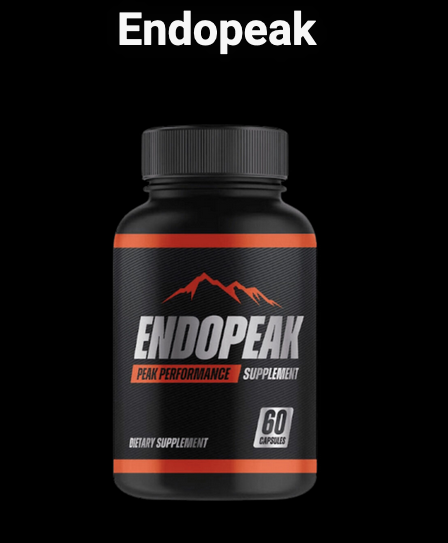
EndoPeak | Supplements – Health
EndoPeak Introducing EndoPeak, a natural nutritional complement crafted to deal with sexual fitness concerns in men....

⚡️The Ultimate Keto Meal Plan⚡️ Make $37 AOV With A $1 Sale
The Ultimate Keto Meal Plan The Ultimate Keto Meal Plan presents a comprehensive instructional program meticulously...

Health Bundle : Embracing Holistic Wellness for Body and Mind
Health Bundle Embarking on a journey towards optimal physical and mental health, the Health Bundle offers a digital...

The KlickTipp Partner Program: Excellence or Nothing
KlickTipp Partner Program With so many great opportunities for your digital download products on the internet these...

Project Serenity: Earn 33% Lifetime Commissions
Project Serenity Looking for something new to generate passive income and contribute positively to people’s...

WePointz : Enjoy Playing and Making Money
WePointz In an era of increasing demand for profit from games and withdrawing money via PayPal, WePointz stands out as...

Your phone battery will last for very long years with this option that you must activate
Protect phone Battery One of the reasons many users change their mobile phones is because the battery deteriorates...

Coinplix: Online Money App- a legitimate platform
Coinplix Coinplix is an app that offers opportunities for users to earn money and rewards online. The success of...

Games & office Original Lifetime Serial Numbers
Office and games lifetime serial number If you still don't have Windows, Office, game original activation "serial...

AI videos : 4 best free alternatives for Sora..
AI Video Generators Artificial intelligence is progressing in full swing. Today, AI systems are able to perform...

Hearing songs :4 sites to make money from hearing songs
Hearing Songs Have you ever imagined that you could generate extra income by listening to and evaluating music?...

Payup website :earn money from viewing videos
Payup In the age of modern technology, the ways to earn money online have become diverse and multiple, and among these...

Bear Friends Bubble Shooter game:Make Real Money
Bear Friends Bubble Shooter One of the popular games on smartphones, Bubble Shooter is a great opportunity for people...

Toloka yandex app : earn UP TO $50 per day
Toloka yandex Today we will talk about toloka yandex app which is one of the best profit apps in the world of online...
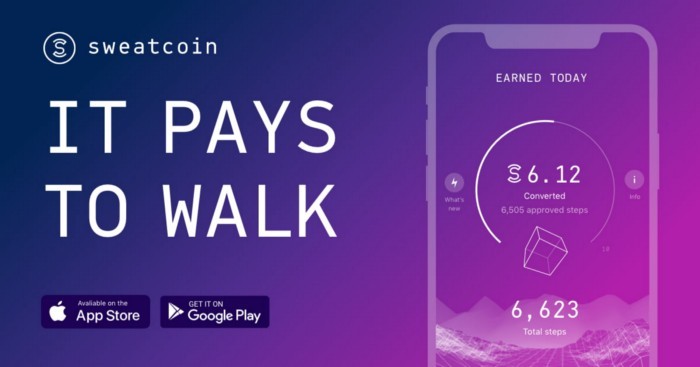
Sweatcoin: earn money from the walking application
Sweatcoin App Profit from walking refers to converting your daily steps into physical rewards or free offers. In other...

iMacros for Chrome
iMacros This article will introduce you to a fantastic feature iMacros that lets you set up your browser to perform...

Yofan :Discover Secret Profit from Photos
Yofan Yofan is a great platform that enables users to profit by posting photos and taking advantage of AdSense ads....

Apple new MacBook Air with M3 chip
MacBook Air M3 Apple announced its new MacBook Air with the M3 chip, the device with the M3 chip increases by 60...

AMD is upgrading FSR technology to take advantage artificial intelligence.
AMD AMD Chief Technical Officer Mark Papermaster confirmed in an interview with YouTube channel No Priors that the...

Update iOS 17.4.. new features coming to iPhone
IOS 17.4 Apple launched the first beta version of iOS 17.4, which comes with significant updates compared to previous...

Unveiling the First Alternative App Store for the App Store
Setapp The software development company MacPaw has announced the launch of the first alternative App Store for Apple...

Mozilla Redesigns Firefox Interface for Tablets
Mozilla Mozilla is taking great steps towards improving the experience of Firefox users via Android tablets through...

Start my podcast? The Comprehensive Podcast Guide
Podcast Starting your own podcast or so-called "podcast" can be fun, attractive and profitable, but on the other hand,...

Roblox abandons Linux users
Linux Roblox reportedly abandoned Linux users, as the modern version prevents the gaming platform from working with...

Threads intends to roll out API to enhance interaction
Threads The social media app owned by Meta, Threads, plans to make the API widely available to developers by June,...

iPhone 15 in China: unusual decline in prices
iPhone 15 Apple faces an unusually extended drop in iPhone 15 sales in China, prompting sellers to offer price cuts of...
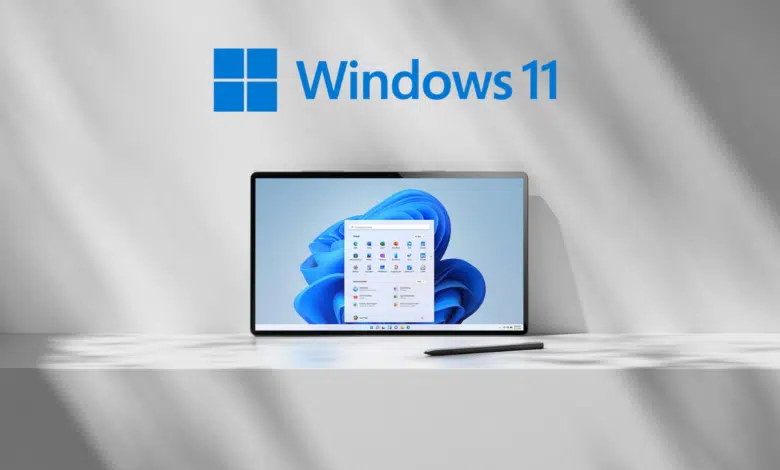
Microsoft enhances Windows 11 with improved AI benefits
WINDOWS 11 Microsoft has begun rolling out a new update to Windows 11 that includes a whole new set of built-in...

China’s smart cars cause concern in Washington
China Smart Cars The United States has announced an investigation into smart cars manufactured in China and other...

X brings live streaming to audio spaces
X :twitter X has announced the availability of live video broadcasting within audio spaces, and audio space users...

WhatsApp launches history search feature in Android
WhatsApp WhatsApp has announced the launch of a history search feature in the Android app starting today in individual...

Honer reveals MagicBook Pro 16
Honor MagicBook Pro 16 Honor unveiled its new MagicBook Pro 16 laptop, with an artificial intelligence feature that...

the most important laptops presented at MWC 2024
MWC 2024 The events of the MWC 2024 Technical Conference were launched in Barcelona, Spain, on 26 February, and...

Honor Ring :a competing smart ring for Samsung ring
Smart RING:HONOR China's Honor announced its intention to launch a future Honor smart ring as well as a vertically...

Hearing Loss in Adults
Hearing Loss in AdultsHearing loss is a partial or complete inability to hear sounds. It can be caused by a variety of...

short videos on YouTube :new and fast way to earn money
Earn from shorts on YouTube Social networks have long been no longer just simple showcases of rosy life. Now they are...

Huawei launches the world’s first tablet to support satellite connectivity
Huawei MatePad Huawei is tireless and continues to prove itself over and over again. We recently saw how they set a...

ClickAsnap : Share photos and start earning money
Clickasnap Clickasnap offers a different way to profit from the Internet. Unlike other sites, you don't earn from...

Honor Magic 6 Pro: Comprehensive review
Honor Magic 6 Pro The Magic 6 Pro is the latest phone from the Chinese company Honor, and this phone has received...

OnePlus Watch reveals its OnePlus Watch 2
OnePlus Watch 2 China's OnePlus Watch 2 has been unveiled with leading specifications during its participation in...

Realme 12 Pro + phone:A Comprehensive review
Realme 12 Pro The new Realme 12 Pro + comes with slight design improvements compared to the previous model, but it...

BYD launches its Yangwang U9 electric supercar
Electric Car :BYD Chinese BYD joined the battle of supercars with its car called the Yangwang U9. The Yangwang U9...

ZTE launches 3D tablet without glasses
ZTE :3D tablet ZTE launched its MWC event 2024 3D tablet without glasses with 5G network support and Nubia Pad 3D...

Instagram develops feature that lets you track friends’ locations
Instagram Track Location Instagram has evolved its "Friends Map" feature, a Meta spokesperson confirmed after...
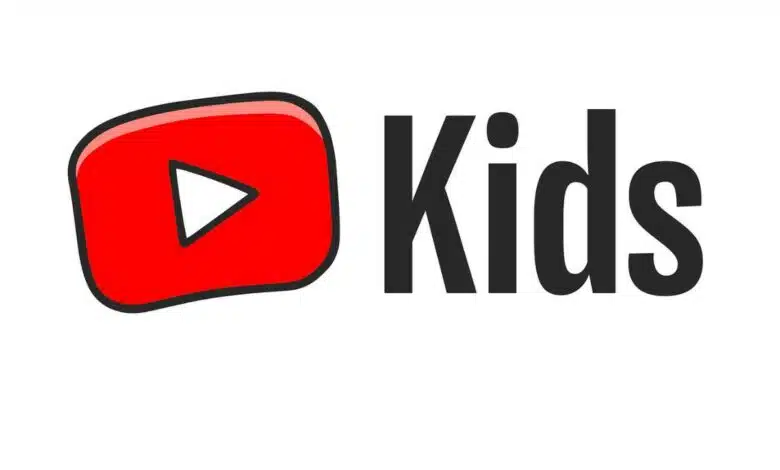
Google removes YouTube Kids app from smart TVs
Google remove YouTube Kids app!! Google announced its intention to remove the YouTube Kids app from the smart TVs it...

Tecno announces its Camon 30 Premier smartphone
TECNO CAMON 30 Premier Tecno announced the Camon 30 Premier 5G ahead of its launch in the second quarter of this year....

TCL Reveals Cheap New Phones
TCL : New Phones Chinese company TCL has unveiled its two new TCL 50 SE and 50 5G phones of cheap class to suit...

Snapchat intends to unite Spotlight and Stories experience
Snapchat Snapchat is taking a few steps this year to boost growth, including consolidating experience across Stories...

Vision Pro glasses by Apple: Unveiling specifications, benefits, applications, and pricing.
Apple Vision Pro Earlier Friday, Apple announced sales of the redesigned Apple Vision Pro glasses at its U.S. stores....

Helldivers 2 has made its mark through entering the top 20 games in Steam records
Helldivers 2 The recently released Helldivers 2 now not simplest garnered huge attention from the gaming network...

TikTok Rolls Out Apple Music and Spotify Integration Across 163 Countries
Tiktok New Update The latest update from China's TikTok app introduces an exciting feature, enabling users across 163...

Innovative AI Methods for Eye Disease Detection
AI for EYE diseases New AI-Based Software Developed in Russia for Diagnosing Eye Diseases and Visual Impairments (AI...

Apple’s AirPods Max 2: Pre-announcement Leaks
Leaked information regarding Apple's anticipated AirPods Max 2 has surfaced on certain internet websites. According...

Minecraft : How is the Game Shaping the Future for Thousands of Children?
Minecraft In the gaming realm, Minecraft emerged as a phenomenon from its inception, captivating audiences across...

Google launches AI model “Gemma”
Gemma: AI Model According to Reuters, on Wednesday, Google unveiled a new open-source AI model named Gemma, which...

Trusting Artificial Intelligence for Children: Exploring Safety and Reliability
Artificial Intelligence for Children In today's digital age, artificial intelligence (AI) is revolutionizing the way...

Sea of Thieves Headed to PlayStation 5 in April: Xbox Reveals Four Upcoming Exclusives for Other Platforms
PlayStation and Nintendo Switch Games Pentiment will hit PS5 this February, Hi-Fi Rush will arrive in March, and...

February’s PlayStation Plus Game Revealed: Check it Out Now!
February PlayStation Plus games Sony Unveils Exciting PlayStation Plus games Catalogue Additions for February 2024:...

Apple: Insights into the Prospects of Future Artificial Intelligence
Apple AI Apple Faces Challenges in 2024: Can New AI Features in iOS 18 Turn the Tide? As various indicators suggest a...

Sora: Introducing a Cutting-Edge AI Model for Text-to-Video Conversion
SORA An OpenAI's pioneering generative AI model, revolutionizes the landscape of video creation by seamlessly...

QuillBot: An Artificial Intelligence Tool for Generating Premium Content
QuillBot QuillBot, a sophisticated AI writing tool, provides users with numerous functionalities such as sentence...
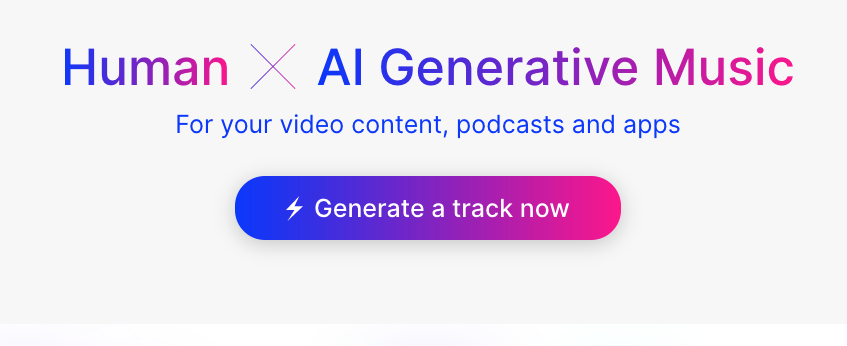
Mubert AI: Unique Music for Your Projects, Free from Copyright Restrictions
Mubert AI is an online platform leveraging artificial intelligence (AI) to generate music and audio free from...
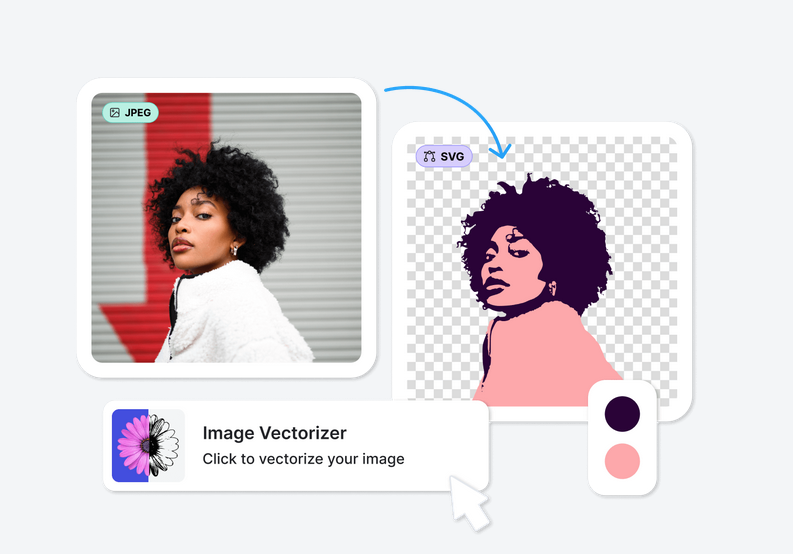
Vectorizer AI :Revolutionizes Image Transformation with Artificial Intelligence
Unlock Your Creativity: Vectorizer AI Transforms Dot Images into Infinite Possibilities with Artificial Intelligence"...

Janitor AI: A Top-Tier AI Persona for Chat Interaction
Janitor AI Discover the Magic of Janitor AI: Your Ultimate Role-Playing Chatbot Powered by Artificial Intelligence...

Challenges in Fable Development: Forzatech Engine Struggles
Fable game The journey of bringing Playground Games' highly anticipated Fable Game to life seems to have hit a...

Fable: There’s speculation indicating the possibility of the game being released in 2025
Fable game Since its announcement by Playground Games in 2020, anticipation for the new Fable game has been steadily...

Mastering Gemini AI: Your Ultimate Guide to Using It as a Virtual Assistant on Android Phones
Gemini Google Google recently rebranded its chatbot program, formerly known as Bard, to Gemini and introduced the...

Discover the Best Tips for Fast and Effortless Honey Gathering in Palworld!
Palworld :Honey gathering In Palworld, indulging your Pals with a variety of treats, from berries to fried eggs, is...

Palworld: Third-Largest Concurrent Player Game in Steam History
Palworld:Third Highest played game The game Achieves Monumental Success with 1.58 Million Concurrent Players on...

Essential Tips for Newcomers to Palworld: Get Started on the Hottest Game of the Year!
Palworld has taken the gaming world by storm, making headlines as the third most concurrently-played game in Steam...

Unveiling Palworld: A Deep Dive into the Ultimate Gaming Adventure
Palworld Dive into the world of Palworld, a captivating crafting and survival game reminiscent of "Pokémon with guns."...

Xiaomi Unveils Groundbreaking Mi TV LUX Transparent Edition: A Futuristic Innovation
Xiaomi Mi TV LUX OLED Xiaomi, known for its groundbreaking mobile devices, also impresses with a diverse product...

LG Unveils Revolutionary Transparent and Wireless TV Innovation
LG Signature T CES 2024 commenced with a bang, featuring LG's groundbreaking reveal: the LG Signature T. This...

Lenovo Unveils Revolutionary Transparent Laptop Innovation
Lenovo transparent laptop The highly anticipated Mobile World Congress (MWC) 2024 is just around the corner, scheduled...

Unlocking Fun and Brainpower: A Comprehensive Guide to Connections NYT Puzzle Game
In a world filled with digital distractions, finding a game that not only entertains but also challenges your...

Earning from Clicks Made Easy: A Comprehensive Guide to SERPCLIX’s Effortless Method
Increase your online income with SerpClix: a trusted platform that generates profit per click If you’re looking for a...

Seamlessly Integrate Gemini AI on iOS: Your Complete Guide
Gemini AI on iOS Discover how to effortlessly incorporate Gemini, the cutting-edge AI developed by Google, into your...

Exploring the Future of Storytelling with Character AI: Revolutionizing Narrative Experiences
In the realm of digital storytelling, a groundbreaking innovation is on the rise – Character AI. This cutting-edge...

Upcoming Samsung Phones to Receive Galaxy AI Update”
Samsung Galaxy:Galaxy AI AI takes center stage in the Galaxy S24 series, with the Ultra model pushing the boundaries...

Top 5 Platforms for Bloggers and Writing Enthusiasts
Blogging: Top 5 Sites to Boost Your Blogging Passion and Profits Blogging has evolved into a significant field,...

professional logo from your Android phone: Best 5 apps
Best apps: canva, logo maker... No need to fret – crafting a quality logo on your mobile phone doesn't require expert...

Don’t trust your mobile camera, because your photos will never be 100% original for this reason
Mobile Camera A few years ago, we were seeing a battle between the three major smartphone brands,...

Maximizing Profits on Telegram: A Beginner’s Guide for Entrepreneurs
Profits On Telegram Over 700 million users worldwide, the platform also has 4 million users paying for free...

Top 10 Commission Marketing Sites
Top 10 Comission Marketing sites Commission marketing has become a high-value, low-risk means of obtaining high...

Sugar Defender | Supplements – Health
Sugar Defender | Supplements - Health Diabetes control needs you to be conscious. Know what causes blood sugar to...

Profit from podcasts step by step
Profit from podcasts step by step The fun of a podcast is that it can be anything you want: a hobby, a side business,...

Final Fantasy 7 Rebirth (PS5)
Final Fantasy 7 Rebirth (PS5) Final Fantasy VII Rebirth is a significant step forward from its predecessor, and it is...

Immortals of Aveum becomes the first game to support frame rate increase techniques on home consoles
Immortals of Aveum Ascendant Studios Studio yesterday , May 25, 2024, announced the official availability of FSR 3...

WWE 2K24 PlayStation 5
WWE 2K24 PlayStation 5 Today we offer you a review of WWE game 2K24 the latest parts of the series which offers with...

Profit from Merch By Amazon :Comprehensive Guide 2024
Merch Bay Amazon Merch by Amazon is the best platform to buy ready-to-wear, and this platform has opened a great...

Fae Farm
Fae Farm The comforting simulation game Fae Farm will allow you to grow crops and make friendsPhoenix Labs' Fae Farm...

Best 7 Classic Mega Drive Android Games
Best Classic Mega Drive Android Games Android is one of the best platforms for playing old games. Not only because of...

Gumrod : Earn more than $2,000 per month from the sale of digital products
Gumrod Did you know that the sale of digital products has been growing exponentially in recent times, as individuals...

Dailymotion website: a perfect alternative for beginners to earn money
Dailymotion Are you looking for an easy and effective way to profit from the Internet? Do you like sharing videos ? If...

FIVERR website: a Comprehensive Guide from registration to withdrawal
FIVERR Today I offer you the way to earn thousands of dollars from the popular website FIVERR to profit from mini...

Adscook : New Platform to manage and optimize your Facebook and Instagram ads
Adscook There is no doubt that social media platforms are a powerful tool for companies of all sizes. However, when it...

Picuki Instagram Viewer : The new instagram challenger
Picuki Instagram Instagram is an app used by millions of people throughout the day. It is an ideal social network for...

Earn money by playing : best 10 Android games
Earn money by Playing If you don't know, there are games where you can get money. In this article we will leave you...

HARPA AI: AI-Powered Chrome Assistant
Harpa AI If you're a regular user of Google Chrome, take a look at Google's new AI extension called Harpa AI because...

Top 4 Android Apps to Learn English with AI
Learn English with AI Learning a new language is not an easy task, and we always welcome any help we can get. If...

EndoPeak | Supplements – Health
EndoPeak Introducing EndoPeak, a natural nutritional complement crafted to deal with sexual fitness concerns in men....

⚡️The Ultimate Keto Meal Plan⚡️ Make $37 AOV With A $1 Sale
The Ultimate Keto Meal Plan The Ultimate Keto Meal Plan presents a comprehensive instructional program meticulously...

Health Bundle : Embracing Holistic Wellness for Body and Mind
Health Bundle Embarking on a journey towards optimal physical and mental health, the Health Bundle offers a digital...

The KlickTipp Partner Program: Excellence or Nothing
KlickTipp Partner Program With so many great opportunities for your digital download products on the internet these...

Project Serenity: Earn 33% Lifetime Commissions
Project Serenity Looking for something new to generate passive income and contribute positively to people’s...

WePointz : Enjoy Playing and Making Money
WePointz In an era of increasing demand for profit from games and withdrawing money via PayPal, WePointz stands out as...

Your phone battery will last for very long years with this option that you must activate
Protect phone Battery One of the reasons many users change their mobile phones is because the battery deteriorates...

Coinplix: Online Money App- a legitimate platform
Coinplix Coinplix is an app that offers opportunities for users to earn money and rewards online. The success of...

Games & office Original Lifetime Serial Numbers
Office and games lifetime serial number If you still don't have Windows, Office, game original activation "serial...

AI videos : 4 best free alternatives for Sora..
AI Video Generators Artificial intelligence is progressing in full swing. Today, AI systems are able to perform...

Hearing songs :4 sites to make money from hearing songs
Hearing Songs Have you ever imagined that you could generate extra income by listening to and evaluating music?...

Payup website :earn money from viewing videos
Payup In the age of modern technology, the ways to earn money online have become diverse and multiple, and among these...

Bear Friends Bubble Shooter game:Make Real Money
Bear Friends Bubble Shooter One of the popular games on smartphones, Bubble Shooter is a great opportunity for people...

Toloka yandex app : earn UP TO $50 per day
Toloka yandex Today we will talk about toloka yandex app which is one of the best profit apps in the world of online...

Sweatcoin: earn money from the walking application
Sweatcoin App Profit from walking refers to converting your daily steps into physical rewards or free offers. In other...

iMacros for Chrome
iMacros This article will introduce you to a fantastic feature iMacros that lets you set up your browser to perform...

Yofan :Discover Secret Profit from Photos
Yofan Yofan is a great platform that enables users to profit by posting photos and taking advantage of AdSense ads....

Apple new MacBook Air with M3 chip
MacBook Air M3 Apple announced its new MacBook Air with the M3 chip, the device with the M3 chip increases by 60...

AMD is upgrading FSR technology to take advantage artificial intelligence.
AMD AMD Chief Technical Officer Mark Papermaster confirmed in an interview with YouTube channel No Priors that the...

Update iOS 17.4.. new features coming to iPhone
IOS 17.4 Apple launched the first beta version of iOS 17.4, which comes with significant updates compared to previous...

Unveiling the First Alternative App Store for the App Store
Setapp The software development company MacPaw has announced the launch of the first alternative App Store for Apple...

Mozilla Redesigns Firefox Interface for Tablets
Mozilla Mozilla is taking great steps towards improving the experience of Firefox users via Android tablets through...

Start my podcast? The Comprehensive Podcast Guide
Podcast Starting your own podcast or so-called "podcast" can be fun, attractive and profitable, but on the other hand,...

Roblox abandons Linux users
Linux Roblox reportedly abandoned Linux users, as the modern version prevents the gaming platform from working with...

Threads intends to roll out API to enhance interaction
Threads The social media app owned by Meta, Threads, plans to make the API widely available to developers by June,...

iPhone 15 in China: unusual decline in prices
iPhone 15 Apple faces an unusually extended drop in iPhone 15 sales in China, prompting sellers to offer price cuts of...

Microsoft enhances Windows 11 with improved AI benefits
WINDOWS 11 Microsoft has begun rolling out a new update to Windows 11 that includes a whole new set of built-in...

China’s smart cars cause concern in Washington
China Smart Cars The United States has announced an investigation into smart cars manufactured in China and other...

X brings live streaming to audio spaces
X :twitter X has announced the availability of live video broadcasting within audio spaces, and audio space users...

WhatsApp launches history search feature in Android
WhatsApp WhatsApp has announced the launch of a history search feature in the Android app starting today in individual...

Honer reveals MagicBook Pro 16
Honor MagicBook Pro 16 Honor unveiled its new MagicBook Pro 16 laptop, with an artificial intelligence feature that...

the most important laptops presented at MWC 2024
MWC 2024 The events of the MWC 2024 Technical Conference were launched in Barcelona, Spain, on 26 February, and...

Honor Ring :a competing smart ring for Samsung ring
Smart RING:HONOR China's Honor announced its intention to launch a future Honor smart ring as well as a vertically...

Hearing Loss in Adults
Hearing Loss in AdultsHearing loss is a partial or complete inability to hear sounds. It can be caused by a variety of...

short videos on YouTube :new and fast way to earn money
Earn from shorts on YouTube Social networks have long been no longer just simple showcases of rosy life. Now they are...

Huawei launches the world’s first tablet to support satellite connectivity
Huawei MatePad Huawei is tireless and continues to prove itself over and over again. We recently saw how they set a...

ClickAsnap : Share photos and start earning money
Clickasnap Clickasnap offers a different way to profit from the Internet. Unlike other sites, you don't earn from...

Honor Magic 6 Pro: Comprehensive review
Honor Magic 6 Pro The Magic 6 Pro is the latest phone from the Chinese company Honor, and this phone has received...

OnePlus Watch reveals its OnePlus Watch 2
OnePlus Watch 2 China's OnePlus Watch 2 has been unveiled with leading specifications during its participation in...

Realme 12 Pro + phone:A Comprehensive review
Realme 12 Pro The new Realme 12 Pro + comes with slight design improvements compared to the previous model, but it...

BYD launches its Yangwang U9 electric supercar
Electric Car :BYD Chinese BYD joined the battle of supercars with its car called the Yangwang U9. The Yangwang U9...

ZTE launches 3D tablet without glasses
ZTE :3D tablet ZTE launched its MWC event 2024 3D tablet without glasses with 5G network support and Nubia Pad 3D...

Instagram develops feature that lets you track friends’ locations
Instagram Track Location Instagram has evolved its "Friends Map" feature, a Meta spokesperson confirmed after...

Google removes YouTube Kids app from smart TVs
Google remove YouTube Kids app!! Google announced its intention to remove the YouTube Kids app from the smart TVs it...

Tecno announces its Camon 30 Premier smartphone
TECNO CAMON 30 Premier Tecno announced the Camon 30 Premier 5G ahead of its launch in the second quarter of this year....

TCL Reveals Cheap New Phones
TCL : New Phones Chinese company TCL has unveiled its two new TCL 50 SE and 50 5G phones of cheap class to suit...

Snapchat intends to unite Spotlight and Stories experience
Snapchat Snapchat is taking a few steps this year to boost growth, including consolidating experience across Stories...

Vision Pro glasses by Apple: Unveiling specifications, benefits, applications, and pricing.
Apple Vision Pro Earlier Friday, Apple announced sales of the redesigned Apple Vision Pro glasses at its U.S. stores....

Helldivers 2 has made its mark through entering the top 20 games in Steam records
Helldivers 2 The recently released Helldivers 2 now not simplest garnered huge attention from the gaming network...

TikTok Rolls Out Apple Music and Spotify Integration Across 163 Countries
Tiktok New Update The latest update from China's TikTok app introduces an exciting feature, enabling users across 163...

Innovative AI Methods for Eye Disease Detection
AI for EYE diseases New AI-Based Software Developed in Russia for Diagnosing Eye Diseases and Visual Impairments (AI...

Apple’s AirPods Max 2: Pre-announcement Leaks
Leaked information regarding Apple's anticipated AirPods Max 2 has surfaced on certain internet websites. According...

Minecraft : How is the Game Shaping the Future for Thousands of Children?
Minecraft In the gaming realm, Minecraft emerged as a phenomenon from its inception, captivating audiences across...

Google launches AI model “Gemma”
Gemma: AI Model According to Reuters, on Wednesday, Google unveiled a new open-source AI model named Gemma, which...

Trusting Artificial Intelligence for Children: Exploring Safety and Reliability
Artificial Intelligence for Children In today's digital age, artificial intelligence (AI) is revolutionizing the way...

Sea of Thieves Headed to PlayStation 5 in April: Xbox Reveals Four Upcoming Exclusives for Other Platforms
PlayStation and Nintendo Switch Games Pentiment will hit PS5 this February, Hi-Fi Rush will arrive in March, and...

February’s PlayStation Plus Game Revealed: Check it Out Now!
February PlayStation Plus games Sony Unveils Exciting PlayStation Plus games Catalogue Additions for February 2024:...

Apple: Insights into the Prospects of Future Artificial Intelligence
Apple AI Apple Faces Challenges in 2024: Can New AI Features in iOS 18 Turn the Tide? As various indicators suggest a...

Sora: Introducing a Cutting-Edge AI Model for Text-to-Video Conversion
SORA An OpenAI's pioneering generative AI model, revolutionizes the landscape of video creation by seamlessly...

QuillBot: An Artificial Intelligence Tool for Generating Premium Content
QuillBot QuillBot, a sophisticated AI writing tool, provides users with numerous functionalities such as sentence...

Mubert AI: Unique Music for Your Projects, Free from Copyright Restrictions
Mubert AI is an online platform leveraging artificial intelligence (AI) to generate music and audio free from...

Vectorizer AI :Revolutionizes Image Transformation with Artificial Intelligence
Unlock Your Creativity: Vectorizer AI Transforms Dot Images into Infinite Possibilities with Artificial Intelligence"...

Janitor AI: A Top-Tier AI Persona for Chat Interaction
Janitor AI Discover the Magic of Janitor AI: Your Ultimate Role-Playing Chatbot Powered by Artificial Intelligence...

Challenges in Fable Development: Forzatech Engine Struggles
Fable game The journey of bringing Playground Games' highly anticipated Fable Game to life seems to have hit a...

Fable: There’s speculation indicating the possibility of the game being released in 2025
Fable game Since its announcement by Playground Games in 2020, anticipation for the new Fable game has been steadily...

Mastering Gemini AI: Your Ultimate Guide to Using It as a Virtual Assistant on Android Phones
Gemini Google Google recently rebranded its chatbot program, formerly known as Bard, to Gemini and introduced the...

Discover the Best Tips for Fast and Effortless Honey Gathering in Palworld!
Palworld :Honey gathering In Palworld, indulging your Pals with a variety of treats, from berries to fried eggs, is...

Palworld: Third-Largest Concurrent Player Game in Steam History
Palworld:Third Highest played game The game Achieves Monumental Success with 1.58 Million Concurrent Players on...

Essential Tips for Newcomers to Palworld: Get Started on the Hottest Game of the Year!
Palworld has taken the gaming world by storm, making headlines as the third most concurrently-played game in Steam...

Unveiling Palworld: A Deep Dive into the Ultimate Gaming Adventure
Palworld Dive into the world of Palworld, a captivating crafting and survival game reminiscent of "Pokémon with guns."...

Xiaomi Unveils Groundbreaking Mi TV LUX Transparent Edition: A Futuristic Innovation
Xiaomi Mi TV LUX OLED Xiaomi, known for its groundbreaking mobile devices, also impresses with a diverse product...

LG Unveils Revolutionary Transparent and Wireless TV Innovation
LG Signature T CES 2024 commenced with a bang, featuring LG's groundbreaking reveal: the LG Signature T. This...

Lenovo Unveils Revolutionary Transparent Laptop Innovation
Lenovo transparent laptop The highly anticipated Mobile World Congress (MWC) 2024 is just around the corner, scheduled...

Unlocking Fun and Brainpower: A Comprehensive Guide to Connections NYT Puzzle Game
In a world filled with digital distractions, finding a game that not only entertains but also challenges your...

Earning from Clicks Made Easy: A Comprehensive Guide to SERPCLIX’s Effortless Method
Increase your online income with SerpClix: a trusted platform that generates profit per click If you’re looking for a...

Seamlessly Integrate Gemini AI on iOS: Your Complete Guide
Gemini AI on iOS Discover how to effortlessly incorporate Gemini, the cutting-edge AI developed by Google, into your...

Exploring the Future of Storytelling with Character AI: Revolutionizing Narrative Experiences
In the realm of digital storytelling, a groundbreaking innovation is on the rise – Character AI. This cutting-edge...

Upcoming Samsung Phones to Receive Galaxy AI Update”
Samsung Galaxy:Galaxy AI AI takes center stage in the Galaxy S24 series, with the Ultra model pushing the boundaries...

Top 5 Platforms for Bloggers and Writing Enthusiasts
Blogging: Top 5 Sites to Boost Your Blogging Passion and Profits Blogging has evolved into a significant field,...

professional logo from your Android phone: Best 5 apps
Best apps: canva, logo maker... No need to fret – crafting a quality logo on your mobile phone doesn't require expert...




